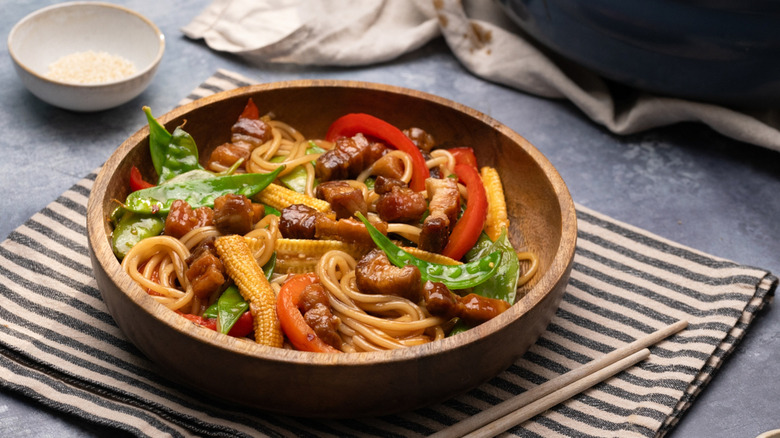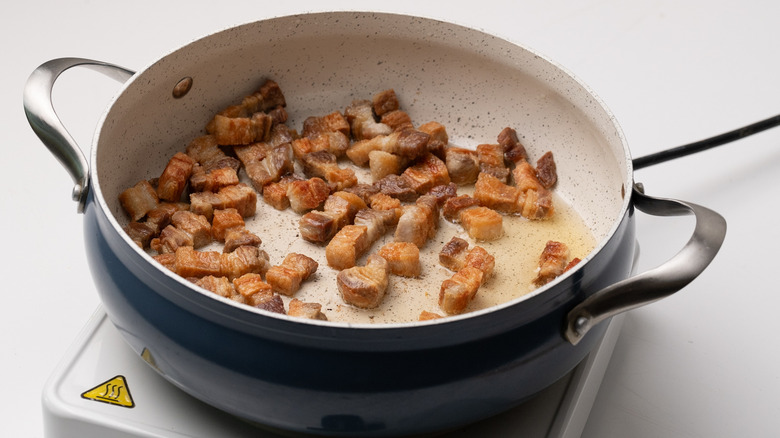Why You Should Consider Cooking Your Pork Belly Twice For Stir-Fry
Beef, chicken, shrimp, tofu ... and the list goes on for all of the protein options that you can add to your stir-fry meal. Out of all the best stir-fry recipes out there, one showcasing pork belly offers a rich and flavorful ingredient that pays homage to traditional Chinese fare and allows you to switch things up on your weekly dinner rotation. The key to pulling off the best pork belly in a homemade stir-fry, however, is to cook it not once — but twice.
This technique is highlighted in Tasting Table's twice-cooked pork belly stir-fry created by recipe developer Jennine Rye. Pork belly comes from the under section of the pig, so it's fatty and often comes attached to skin. By cooking it twice you'll ensure all parts, from skin to fat, achieve the right texture and flavor before the meat goes into the pot or wok with the rest of the ingredients. To achieve that crispy exterior met with a softness inside, the two-step method includes boiling first then frying.
How to boil then fry pork belly for the best stir-fry at home
There are many general tips for making the perfect stir-fry to consider, but here's what to do specifically when preparing pork belly. You'll use 1 pound of pork belly for every four servings (if you follow our recipe). Dice the pork belly into bite-sized pieces; then it's time to start the two-step cooking process. Start with boiling the pork belly for a couple of reasons. The cut of meat can be tough, so the boiling will tenderize it. Another perk is it will add more flavor to the pork, especially if you swap plain water with stock or add aromatics and seasonings to the pot. You'll boil the pork belly for just eight to 10 minutes, according to Jennine Rye.
Frying the pork belly afterwards is what makes the meat crispy in each delicious bite of stir-fry. First drain the pork, then add it to a wok or large frying pan with a bit of vegetable oil. It only takes six to eight minutes to turn the parboiled pork belly into crispy bites. Remove the pork from the pan and use the same pan to cook the rest of the stir-fry ingredients. Then return the pork to the pan towards the end of the process to let all of the flavors meld before it's time to serve and eat.

